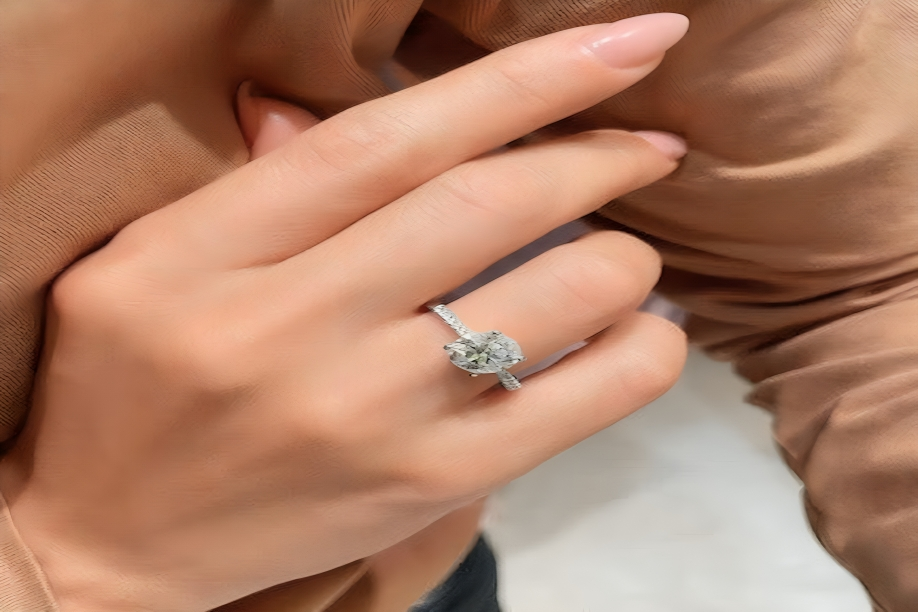The era of Georgian Britain, spanning from 1714 to 1830, was a remarkable time for the evolution of jewelry, particularly engagement rings UK. This period witnessed significant changes in fashion, art, and society, which profoundly influenced the styles and designs of engagement rings. As romantic ideals took hold and personal expression gained importance, engagement rings became cherished symbols of love and commitment, reflecting the tastes and values of the time.
One of the most notable styles during the Georgian era was the use of the rose cut. Characterized by its flat bottom and a multitude of triangular facets on top, the rose cut created a soft, romantic glow that was highly sought after. This cut was particularly favored for its ability to reflect light beautifully, making diamonds and colored gemstones appear even more enchanting. Couples often chose rose-cut diamonds for their engagement rings, as they symbolized both beauty and emotional depth.
Another popular style was the old mine cut, which had a more cushion-like shape and a larger table compared to the rose cut. The old mine cut originated from early diamond mining practices and featured a deep pavilion, allowing for a brilliant sparkle. These cuts were frequently set in ornate settings that showcased the craftsmanship of the era, making them favorites among the upper classes. The old mine cut became synonymous with opulence and was often used in larger stones, making it a preferred choice for engagement rings intended to convey wealth and status.
Cluster settings also gained popularity during the Georgian period. These designs typically featured a central gemstone surrounded by smaller stones, creating a stunning display of brilliance and color. Cluster rings allowed couples to incorporate multiple gemstones into a single piece, enhancing the ring’s visual appeal. Sapphires, rubies, and emeralds were commonly used alongside diamonds, allowing couples to personalize their rings according to their tastes and the symbolism of each stone.
The shank style of the ring also evolved during this time. Traditionally, the band was often simple and understated, but Georgian designs began to incorporate intricate detailing. Many rings featured engraved shanks or decorative motifs that added character and uniqueness to each piece. These details not only enhanced the aesthetics but also conveyed the craftsmanship and artistry that were hallmarks of Georgian jewelry.
The use of gold and silver as primary metals for engagement rings became more prevalent during the Georgian era. While gold had long been favored for its beauty and durability, silver began to emerge as a popular choice due to its ability to showcase intricate designs. Jewelers experimented with various metalworking techniques, leading to the creation of unique textures and patterns that adorned the bands of engagement rings. This shift allowed for greater creativity and personalization, making each ring a unique expression of love.
Romantic motifs also played a significant role in the designs of Georgian engagement rings. Themes such as flowers, hearts, and intertwining vines became common embellishments, symbolizing love and fidelity. The incorporation of these motifs added layers of meaning to the rings, allowing couples to express their feelings through the symbolism embedded in their jewelry.
As the Georgian era progressed, the influence of social changes and rising middle-class affluence made engagement rings more accessible to a broader audience. While initially reserved for the aristocracy, the designs began to reach the emerging middle class, who sought to embrace the romantic ideals of the time. This democratization of jewelry allowed more couples to celebrate their love with engagement rings, further cementing the tradition in British culture.
In conclusion, the popular engagement ring styles in Georgian Britain were characterized by intricate designs, innovative cuts, and meaningful symbolism. From the romantic allure of rose cuts to the stunning visual impact of cluster settings, these rings reflected the values and aesthetics of a transformative era. As engagement rings became more than mere tokens of commitment, they evolved into cherished symbols of love that continue to inspire modern couples today. The legacy of Georgian engagement rings endures, reminding us of the timeless beauty and significance of these exquisite pieces.




